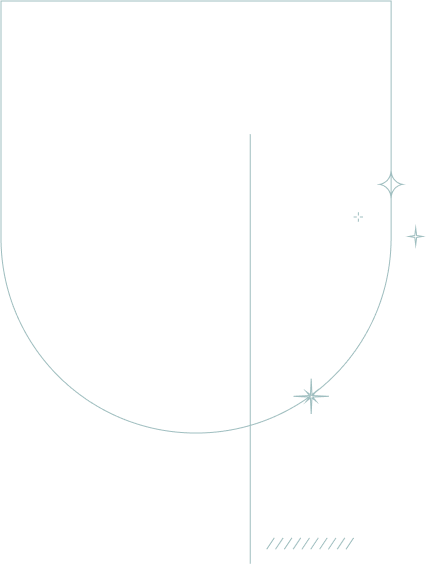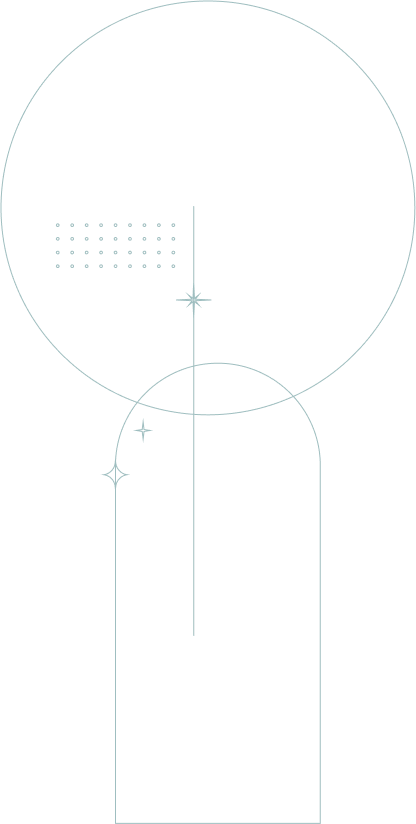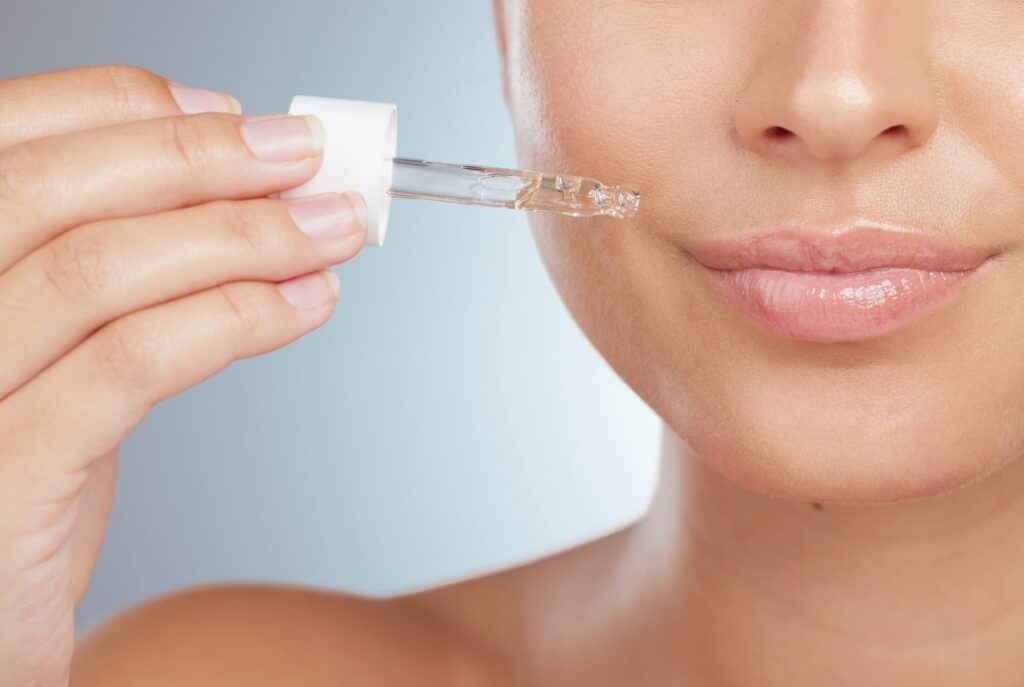
Almost everyone has dealt with pimples or acne at some point, especially during their teenage years. For some, the experience is mild and temporary, while for others, acne can be persistent and more severe. In some cases, acne does not just fade with age but may continue into adulthood, leaving visible scars. In this case, you might need to undergo acne scar treatment
Acne scars affect the appearance of the skin, and typically, multiple types and depths are involved. A multi-modal treatment using several treatment options in the same session improves skin texture and reduces scarring. This guide provides the latest and most effective information on acne scarring, including symptoms, removal, and non-surgical treatments. If you need help with acne scars, this is for you.
What is Acne Scarring, and Why Does It Occur?
Acne scars can be raised or depressed with textural changes in the skin. While mild acne often clears up without any trace, severe breakouts usually leave lasting scars.
How Acne Scarring Develops
The skin has natural regenerative properties, allowing it to heal from wounds and injuries over time. Wounds can turn into scars if the depth of the wound is in the deeper part of the dermis ( the second layer of the skin). Acne scarring remains due to the following:
- Inflammation: Severe acne causes inflammation deep within the skin. This inflammation damages the underlying tissues, including collagen, which is needed for elasticity and structure.
- Picking and squeezing: Picking or squeezing pimples may contribute to inflammation and increase the likelihood of scar development.
- Genetics: Some people are more prone to scarring with mild or severe acne breakouts.
The Difference Between Acne Marks and Acne Scars
Acne Marks or Post-Inflammatory Hyperpigmentation (PIH) or Resolving Redness
- Temporary discolourations after acne lesions heal
- Red or brown spots
- Due to increased melanin production because of inflammation
- It can fade over time after a few months
Acne Scars
- Permanent dips and divets and raised scars affecting the skin’s texture and appearance
- Many types exist: ice pick scars, boxcar scars, rolling scars, keloid scars, or hypertrophic scars.
- Damage the deeper skin layers during a breakout.
It takes time to tell the difference between an acne mark and a scar. If the mark has persisted for several months without fading, these are acne scars. These are scars if the marks change skin texture or are deeper (appearing raised or indented).
Types of Acne Scars: How to Identify Yours
As mentioned, there are several types of acne scars. Acne scars can appear in different forms, such as narrow, wide, raised, or overgrown. Identifying the type of scar can help determine which acne scar treatment options may be most appropriate.
Atrophic Scars
Atrophic scars are acne scars with lost skin tissue, resulting in a pitted or depressed appearance. This type of scar is common after severe acne or may be due to other skin conditions or injuries. Atrophic scars can be further classified as:
Ice pick scars: These are deep and narrow scars that look like ice pick punctures. Because of their appearance, they are the most difficult to treat.
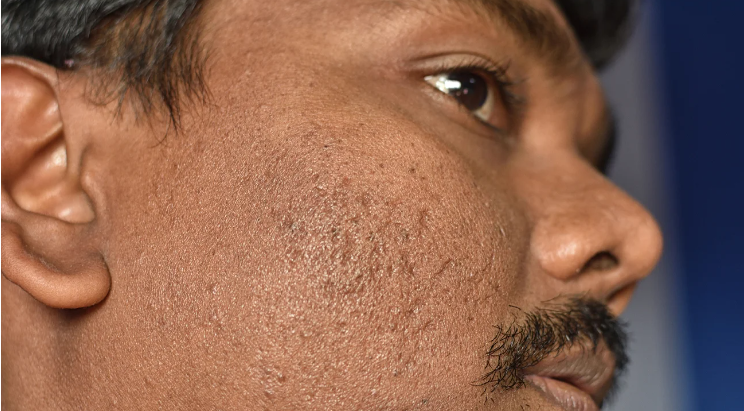
Source: Healthline
Boxcar scars: These scars are wide, box-shaped, with sharp or well-defined edges.
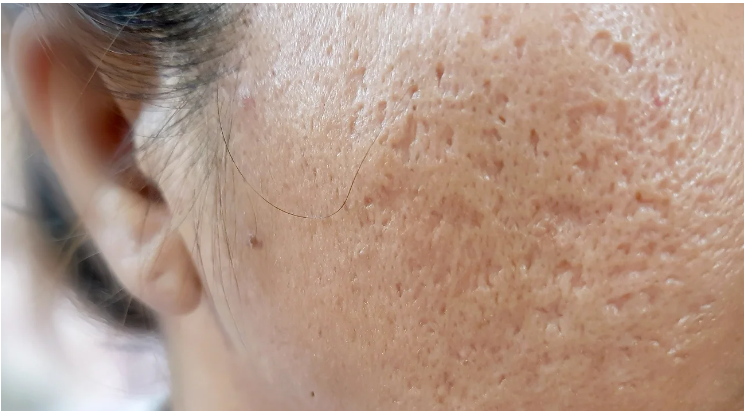
Source: Healthline
Rolling scars: These are broad and shallow scars, making the skin look wavy or uneven.
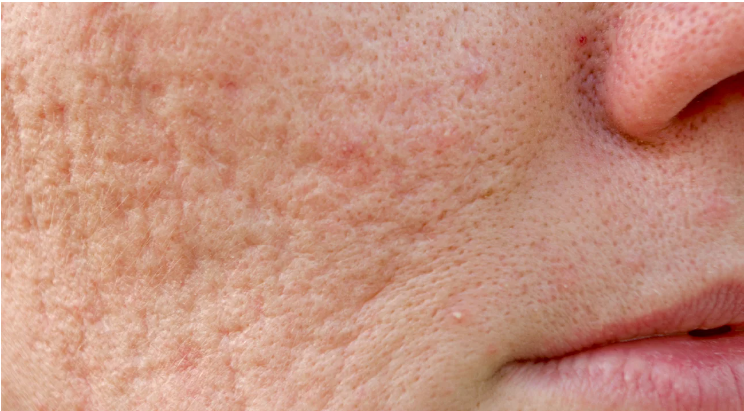
Source: Healthline
Hypertrophic Scars and Keloids
While atrophic scars appear depressed, hypertrophic scars and keloids appear raised. These scars are also more commonly found on the back, chest, and shoulders, as these areas have thicker skin containing more collagen. When the healing process goes into overdrive, scars or keloids form. Moreover, these body areas are subject to more friction from clothing, which irritates the skin and stimulates scar tissue formation.
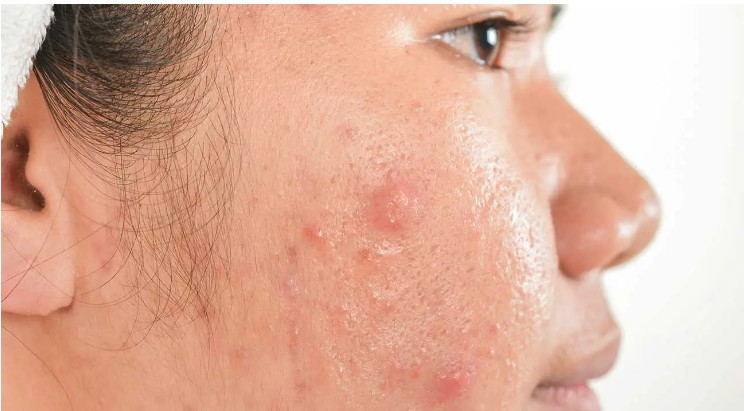
Source: Healthline
Post-Inflammatory Hyperpigmentation (PIH)
PIH is often confused with acne scars because of their similar appearance. Both look like dark spots on the skin. However, there are differences between these two, including their causes and treatments.
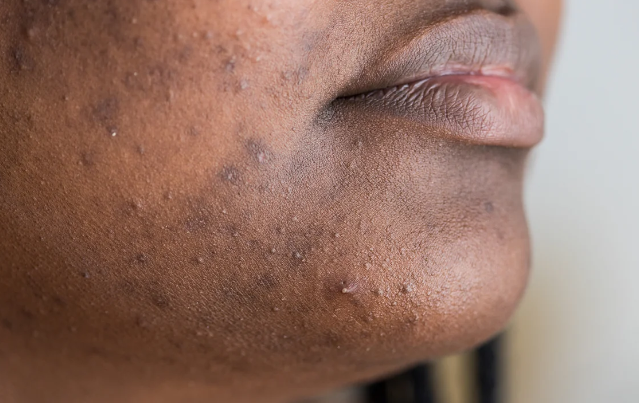
Source: Healthline
PIH takes several months or years to fade, making it seem like a permanent change to the skin, like a scar. Also, PHI affects skin colour, making distinguishing between acne scars difficult. Only a close examination by a dermatologist can tell if a mark is a regular scar or PIH.
The cause varies. PIH is caused by increased melanin production due to inflammation, while acne scars result from damage to the deeper skin layers. PIH does not change the skin’s texture, while acne scars can make it look rough or uneven.
The approach to acne scar treatment also varies. PIH responds well to topical treatments such as hydroquinone, vitamin C, and Azelaic acid. PIH can also be treated with certain laser therapies, such as those at our clinic. Meanwhile, acne scars may require more invasive treatments such as dermal fillers or laser therapy.
What Does Acne Scarring Look Like? Common Symptoms
Acne scarring symptoms vary from person to person, depending on their skin tone. Here are the most common symptoms.
How to Identify Acne Scars on Different Skin Types
Fair Skin
- Atrophic scars: These scars are very noticeable on fair skin as indentations or pits look more pronounced.
- Hypertrophic scars: These scars may be pink or red and are quite visible on fair skin.
- PIH: These scars look like pink or red spots on fair skin and often fade.
Medium Skin
- Atrophic scars: These scars look like indentations or pits.
- Hypertrophic scars: These scars are raised brown or red.
- PIH: These scars appear dark brown or black.
Dark Skin
- Atrophic scars: They are less visible in dark skin due to natural pigmentation.
- Hypertrophic scars: These scars could be raised brown or red.
- PIH: These scars look like brown or black spots. These are more common in darker skin tones and are more persistent.
Common Signs That Indicate Permanent Scarring
Permanent acne scars leave noticeable changes in the skin’s appearance and texture.
- Deep indentations
- Raised bumps or nodules
- Uneven or rough texture
If your acne scar symptoms worsen over time or you feel they affect your self-confidence, it’s time to see Dr Ritu from Dr Refresh for acne scar treatment. Dr Ritu recommends personalised treatments to reduce scarring and enhance your skin’s overall health.
Can Acne Scars Be Removed? Exploring Your Treatment Options
While it is rare to remove acne scars completely, certain treatments may help reduce their visibility and improve overall skin texture.
Is It Possible to Completely Remove Acne Scars?
Complete removal of scars is unlikely, as they are part of the body’s natural healing process. However, certain treatments reduce their appearance and improve skin texture.
However, modern treatments can significantly minimise scar appearance, making them less intense and noticeable.
Removing scars is different from minimising them. Removal erases them as if the scar or mark never existed. Minimising scars focuses more on improving skin texture and reducing discolouration. Advanced technology, such as a combination of ablative and non-ablative laser technology and chemical stimulation of collagen remodelling, can help achieve smoother, evenly toned skin.
Top Acne Scar Removal Treatments
1. Laser Skin Resurfacing for Acne Scars
Laser skin resurfacing is one of several treatment options used to target the appearance of acne scars. This treatment promotes collagen production and resurfaces new skin, helping achieve smoother skin with more even texture.
Laser skin resurfacing targets specific layers of the skin, stimulating the growth of new skin cells and collagen production.
Dr Refresh provides two laser resurfacing options:
Fully Ablative Resurfacing
This method targets the entire surface of the treated area, removing the whole epidermis and part of the dermis in a single treatment. The laser removes the entire skin surface, dramatically improving fully ablative resurfacing and treating deep scars and severe wrinkles.
Fractionated Erbium and CO2 Resurfacing
This method treats the skin in a fractionated pattern, leaving small areas of untreated skin between columns of treated skin. The laser creates microscopic treatment zones (MTZs), penetrating skin in tiny dots and leaving surrounding areas intact. This treatment is less aggressive compared to ablative techniques but may still be adjusted for deeper penetration. Fractionated lasers are effective for acne scars, mild to moderate wrinkles, and texture issues.
Fractionated laser resurfacing offers shorter recovery times, lower pigmentation changes, and scarring risks than a fully ablative solution.
2. TCA Cross (Trichloroacetic Acid Chemical Reconstruction of Skin Scars)
This specialised acne scar treatment improves the appearance of deep, atrophic scars, including ice-pick scars. It works by stimulating collagen production and remodelling scar tissue.
TCA applies high concentrations of trichloroacetic acid directly into the scar using a fine applicator. The acid causes a controlled chemical injury in the scar tissue, prompting the body’s natural healing response. This injury stimulates fibroblasts to produce new collagen that fills in and smooths the scar tissue over time.
Multiple sessions are required as each treatment improves the scar depth and texture. TCA offers reduced downtime and no surgery. There is minimal impact on surrounding healthy skin.
3. Subcision
Subcision is a minimally invasive dermatological procedure for depressed acne scars, such as rolling scars. This treatment releases fibrous bands that tether the scar to the underlying tissue. Subcision allows the skin to lift and promotes new collagen formation.
This acne scar treatment targets the root cause of skin depression without surgery. It is effective for rolling scars and boxcar scars. You will see immediate results right after the procedure due to the release of the tethered bands. Full results may take a few months as collagen forms and fill deep scars.
4. Biostimulation
Another non-invasive acne scar treatment is biostimulation. This treatment leverages the body’s natural regenerative processes to enhance the appearance of acne scars by stimulating collagen production, elastin formation, and tissue remodelling. Biostimulation is effective for atrophic scars, including boxcars and rolling scars, as it enhances skin texture and elasticity over time.
Common biostimulation treatments for acne scars include exosomes and injectable biostimulators. These treatments produce natural-looking results, are minimally invasive, and have long-lasting benefits.
At Dr Refresh, we use multimodal treatments and several treatment options in the same session. This improves skin texture and reduces scarring much more effectively than just using one or one treatment modality at a time.
Is Non-Invasive Treatment Right For You?
Non-invasive treatments for acne scars provide an option for those seeking to reduce the appearance of scars without downtime. These treatments have minimal downtime, and make-up can be worn immediately. These are excellent options for shallow acne scarring.
Dr Ritu can provide specialist advice on whether a non-invasive or surgical treatment is the best option to treat your acne scars.
Take the Next Step Toward Smoother-Looking Skin
Contact Dr Ritu or her clinical staff today for a personalised acne scar assessment. Call Dr Refresh to schedule your appointment at (02) 8014 6505 or book online today.
